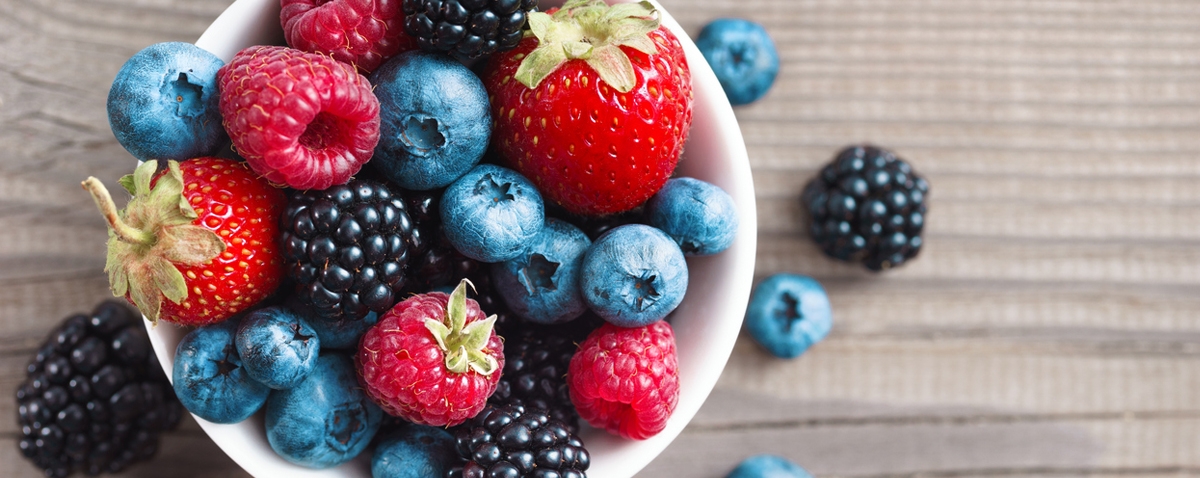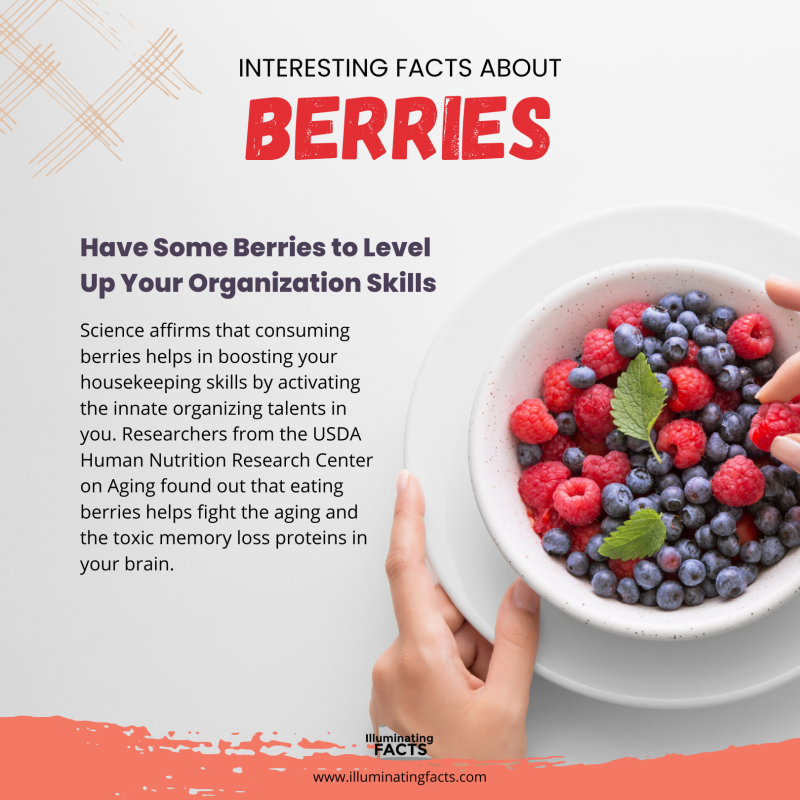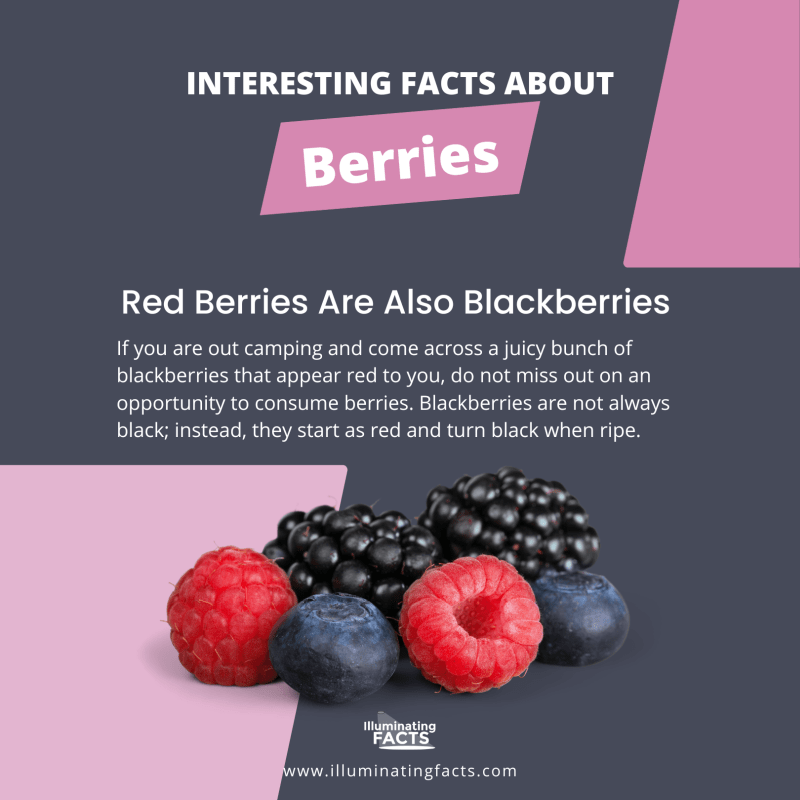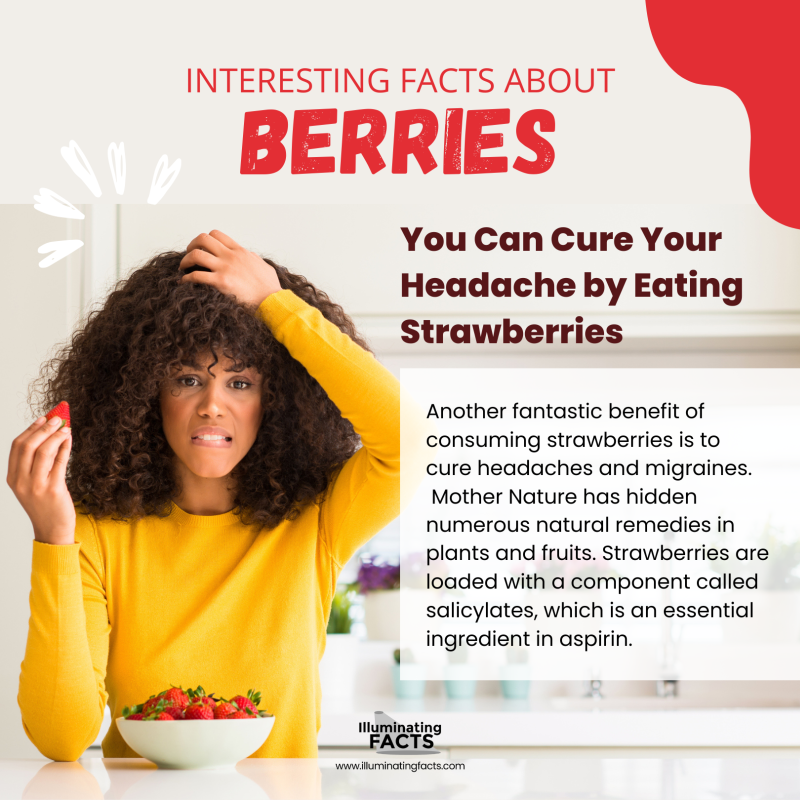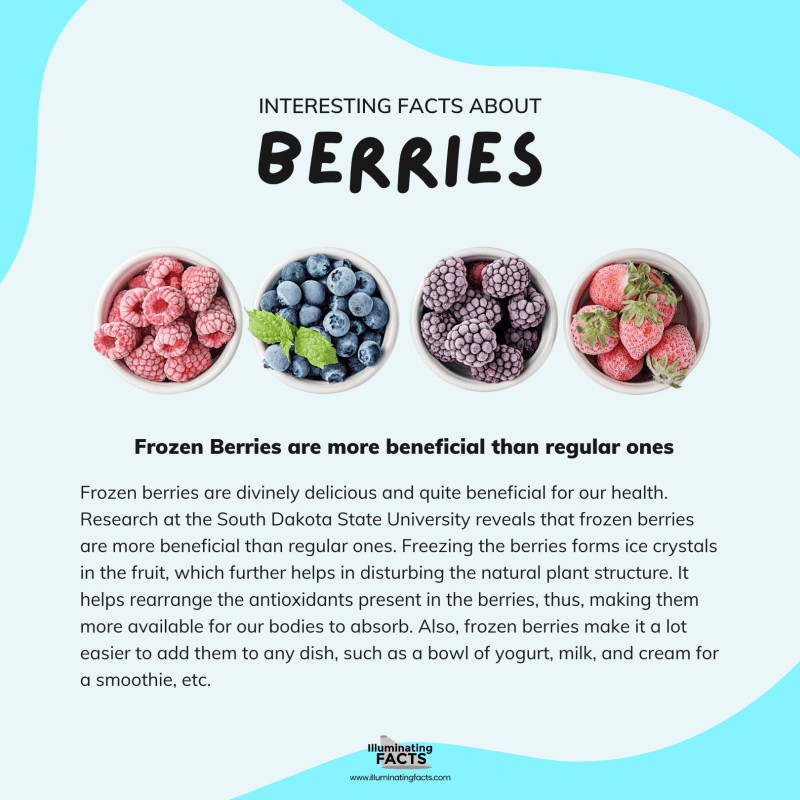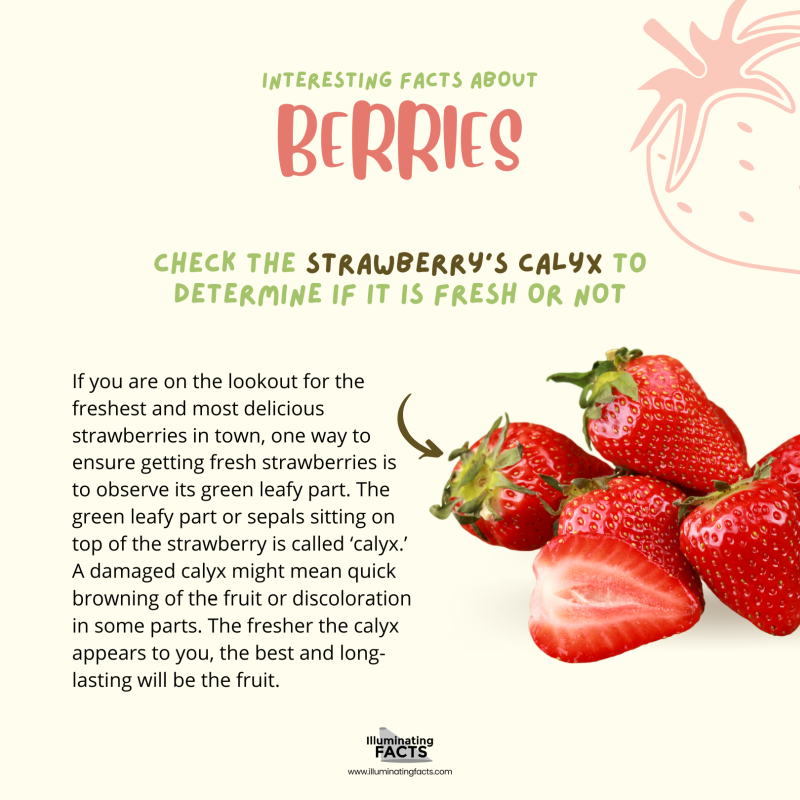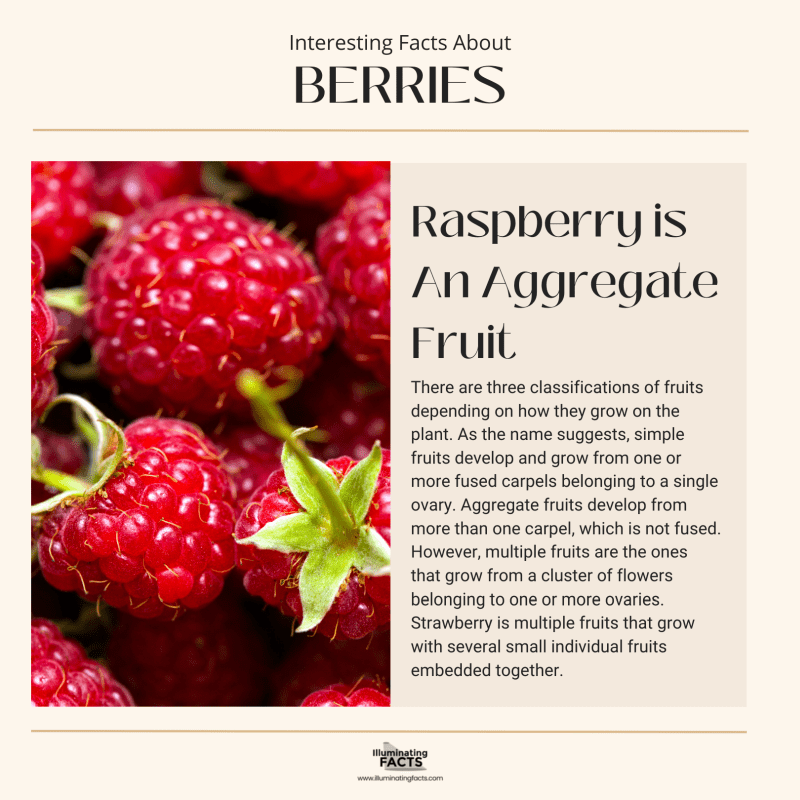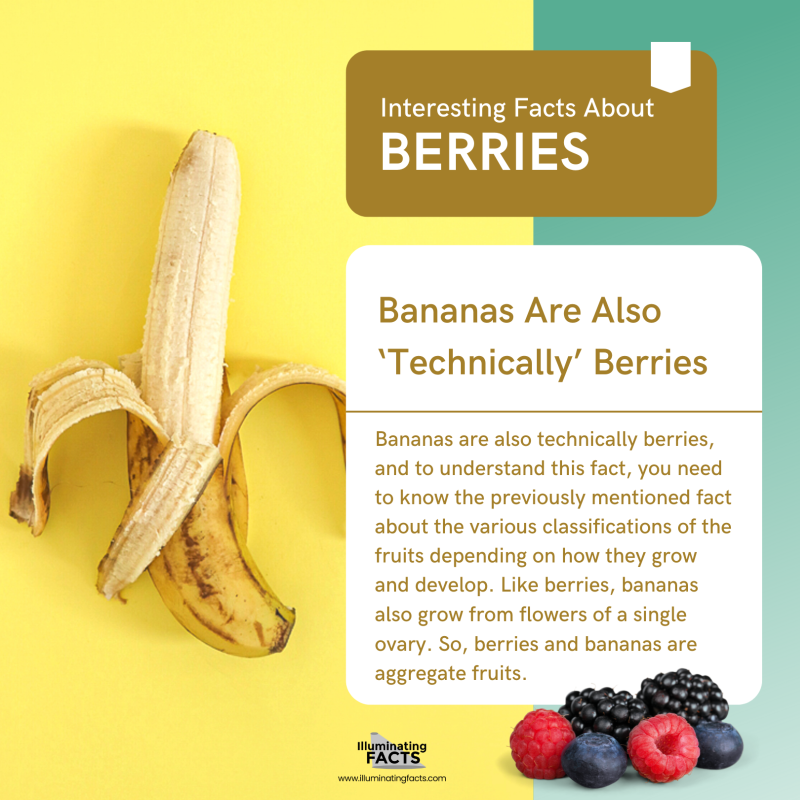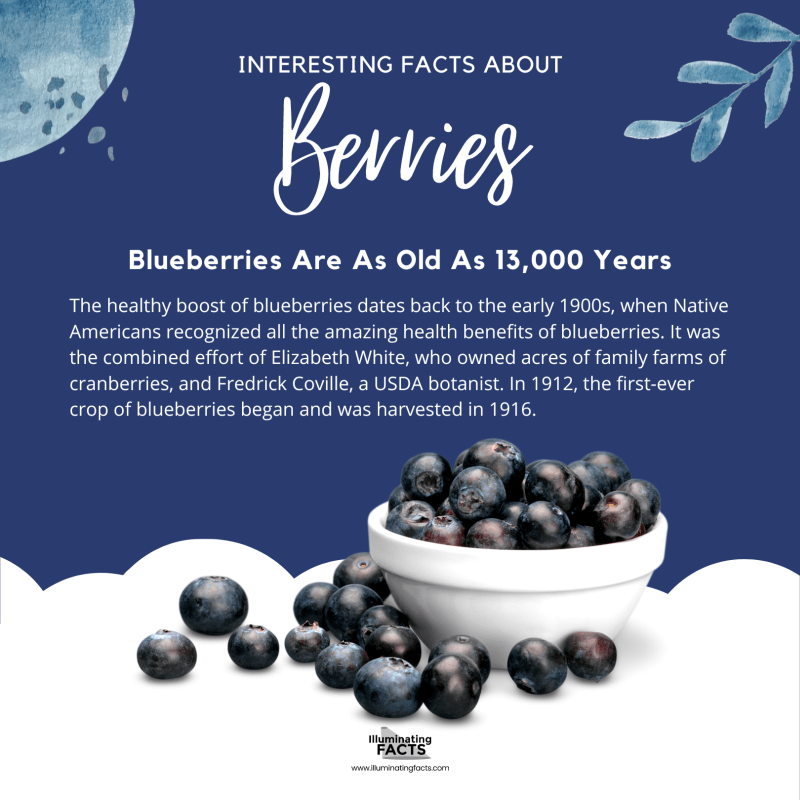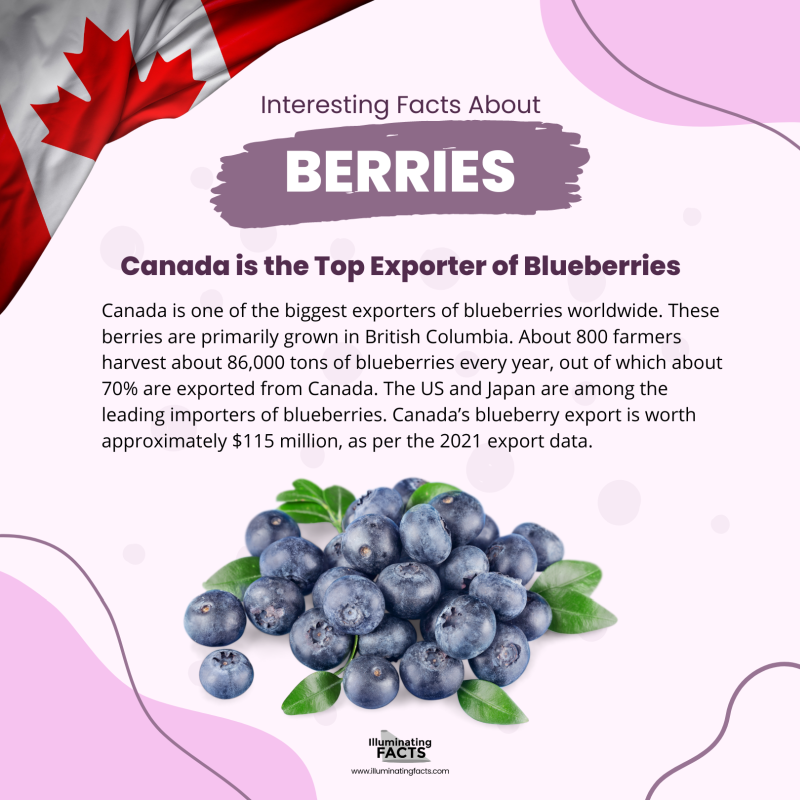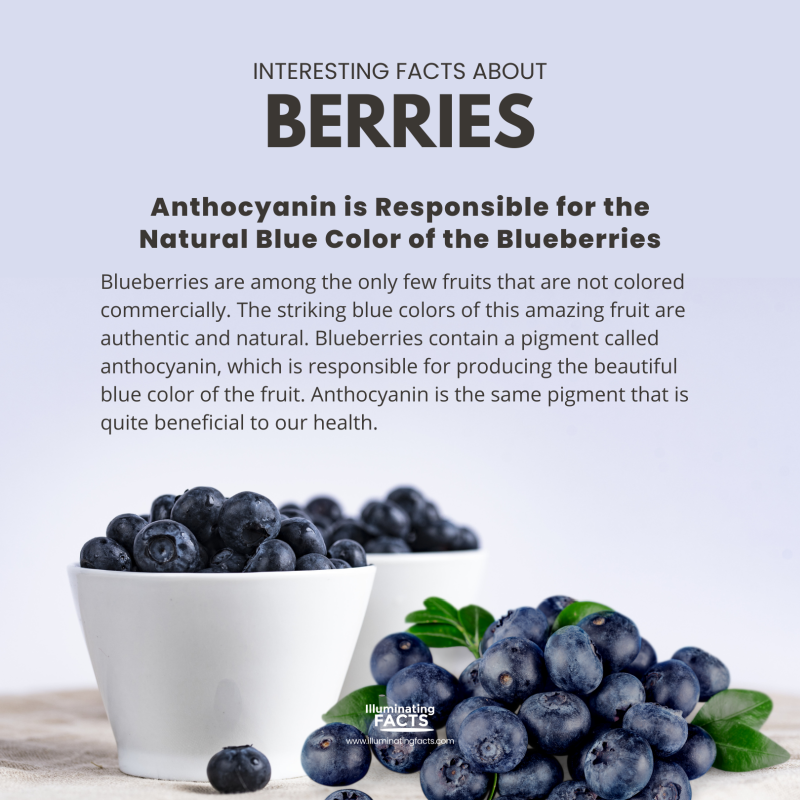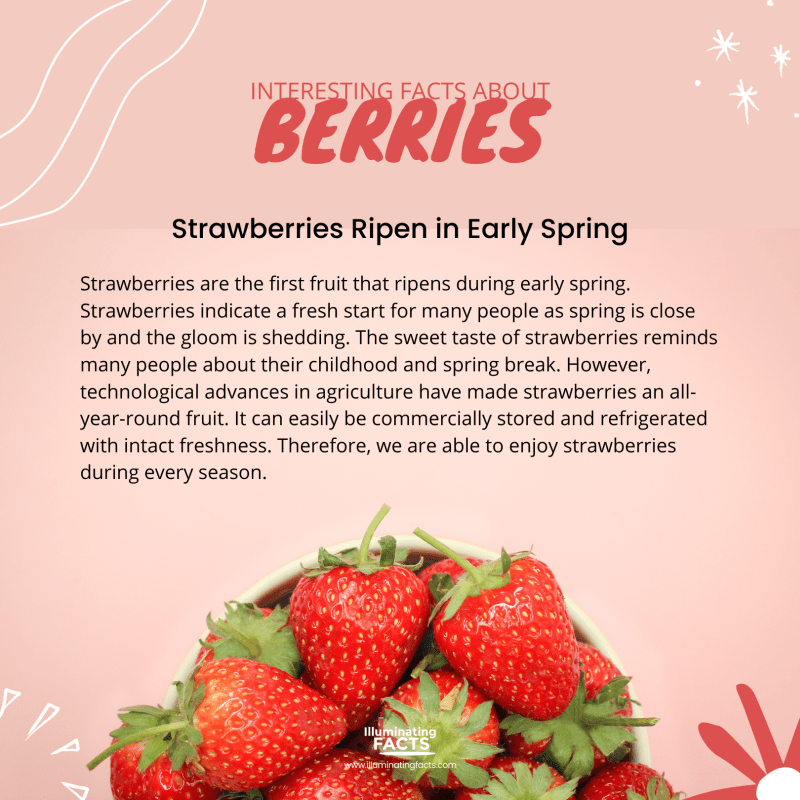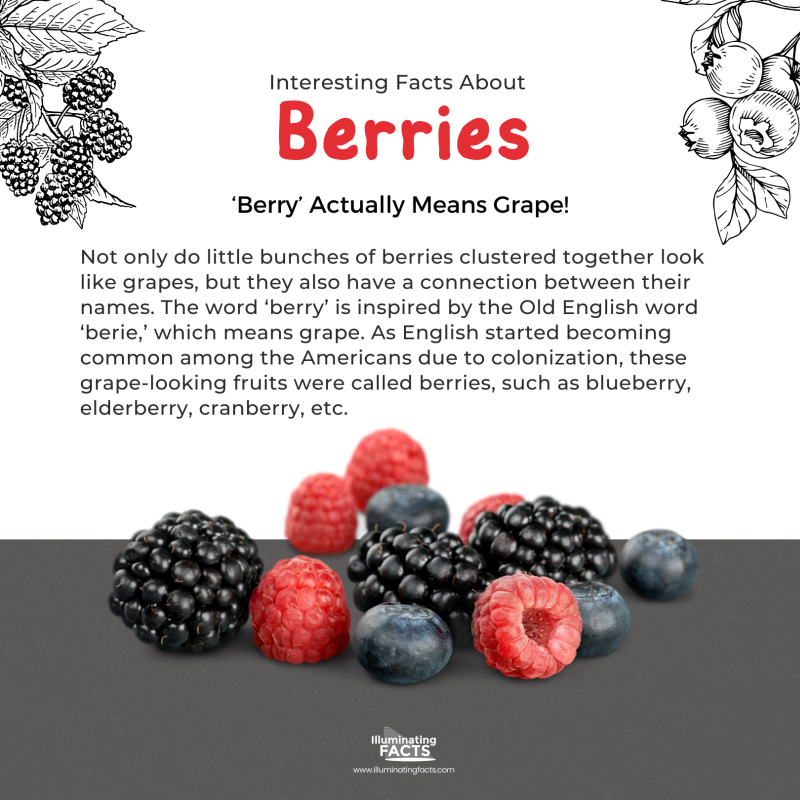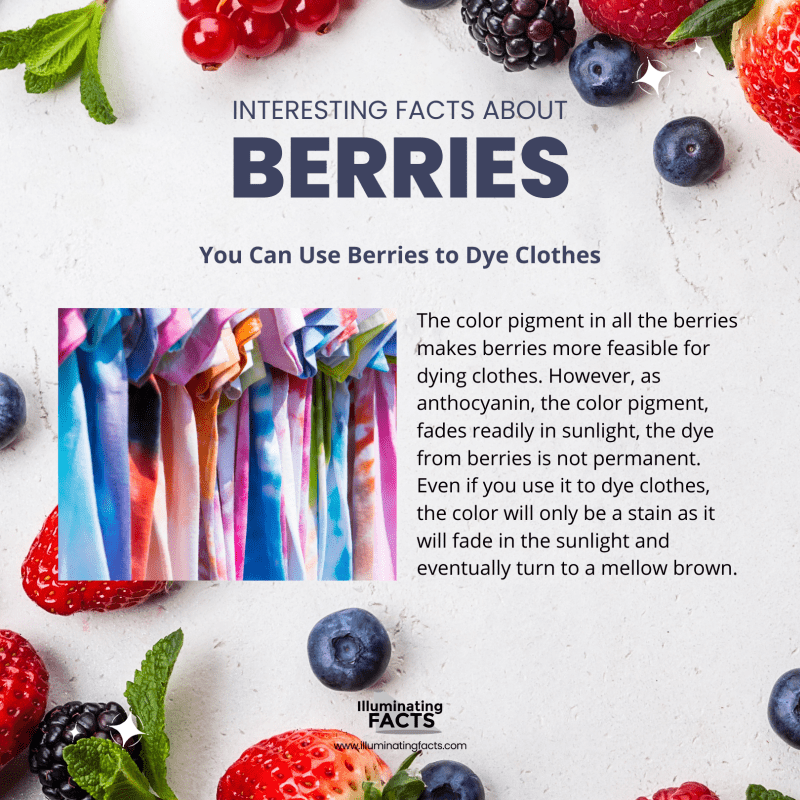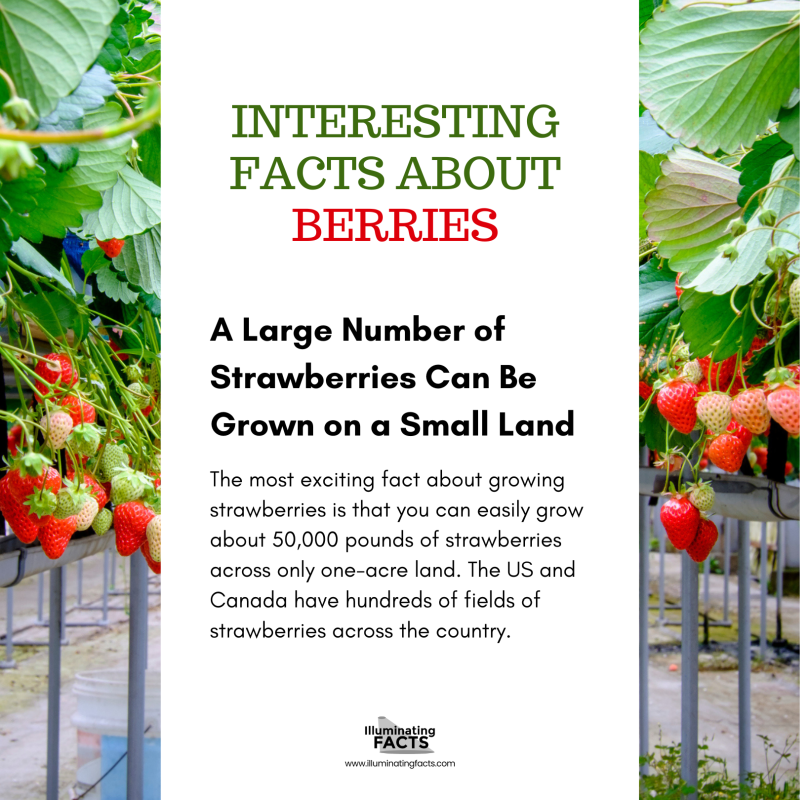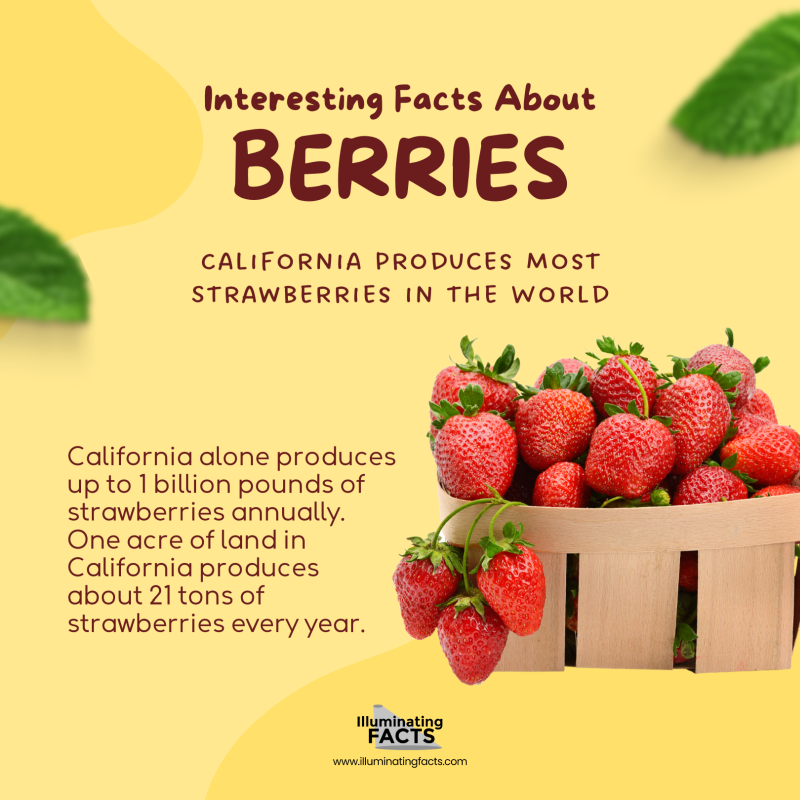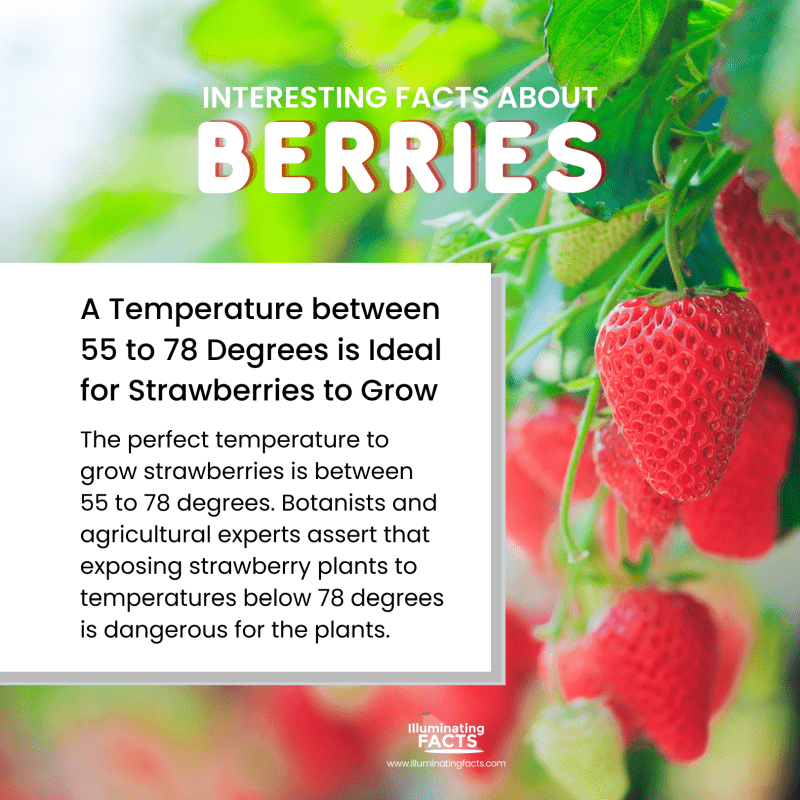Berries are full of antioxidants, flavonoids, and vitamins. There are several different types of berries, but they’re all low in carbohydrates and high in fiber. Berries are great as a snack or as part of your daily meal. Some berries, like acai berries, have unique nutritional properties that make them particularly beneficial to health. Here are some fun facts about the tasty fruit:
1. Have Some Berries to Level Up Your Organization Skills
Science affirms that consuming berries helps in boosting your housekeeping skills by activating the innate organizing talents in you. Researchers from the USDA Human Nutrition Research Center on Aging found out that eating berries helps fight the aging and the toxic memory loss proteins in your brain.
The research further elucidated the benefit of consuming berries in preventing mental degeneration diseases, such as Alzheimer’s disease. [1]
Berries are loaded with anti-inflammatory substances that strengthen the protection of brain cells from harmful free radicals. Valuable components in berries also help increase the neuroplasticity of the brain cells.
2. Red Berries Are Also Blackberries
If you are out camping and come across a juicy bunch of blackberries that appear red to you, do not miss out on an opportunity to consume berries. Blackberries are not always black; instead, they start as red and turn black when ripe.
3. Strawberries Might Be the Only Teeth Whitener You Need
Malic acid is one of the crucial nutritional components of strawberries. They might get stuck in your teeth and become a hassle while eating, but red berries containing malic acid are the best teeth whitener. [17]
You can even make your at-home teeth whitening kit by mixing strawberries with baking soda. It gives results better than any commercial whitening strips.
4. You Can Cure Your Headache by Eating Strawberries
Another fantastic benefit of consuming strawberries is to cure headaches and migraine. Mother Nature has hidden numerous natural remedies in plants and fruits. Strawberries are loaded with a component called salicylates, which is an essential ingredient in aspirin.
Hence eating strawberries is significantly linked to curing headaches and migraines.
So, the next time you are down with a headache, replenish your stock of strawberries! Nutrition research also points out that consuming a low-fat, plant-based diet helps in lowering the severity of headaches and migraines. [2]
5. Frozen Berries are more beneficial than regular ones
Frozen berries are divinely delicious and quite beneficial for our health. Research at the South Dakota State University reveals that frozen berries are more beneficial than regular ones. [3]
Freezing the berries forms ice crystals in the fruit, which further helps in disturbing the natural plant structure. It helps rearrange the antioxidants present in the berries, thus, making them more available for our bodies to absorb.
Also, frozen berries make it a lot easier to add them to any dish, such as a bowl of yogurt, milk, and cream for a smoothie, etc.
6. Check the Strawberry’s Calyx to Determine if it is fresh or not
If you are on the lookout for the freshest and most delicious strawberries in town, one way to ensure getting fresh strawberries is to observe its green leafy part. The green leafy part or sepals sitting on top of the strawberry is called ‘calyx.’
A damaged calyx might mean quick browning of the fruit or discoloration in some parts. The fresher the calyx appears to you, the best and long-lasting will be the fruit. [4]
7. Raspberry is An Aggregate Fruit
There are three classifications of fruits depending on how they grow on the plant. As the name suggests, simple fruits develop and grow from one or more fused carpels belonging to a single ovary. Aggregate fruits develop from more than one carpel, which is not fused.
However, multiple fruits are the ones that grow from a cluster of flowers belonging to one or more ovaries. Strawberry is multiple fruits that grow with several small individual fruits embedded together. [18]
8. Tiny drupelets on the Berries Represent the Number of Bees That Pollinated the Flower
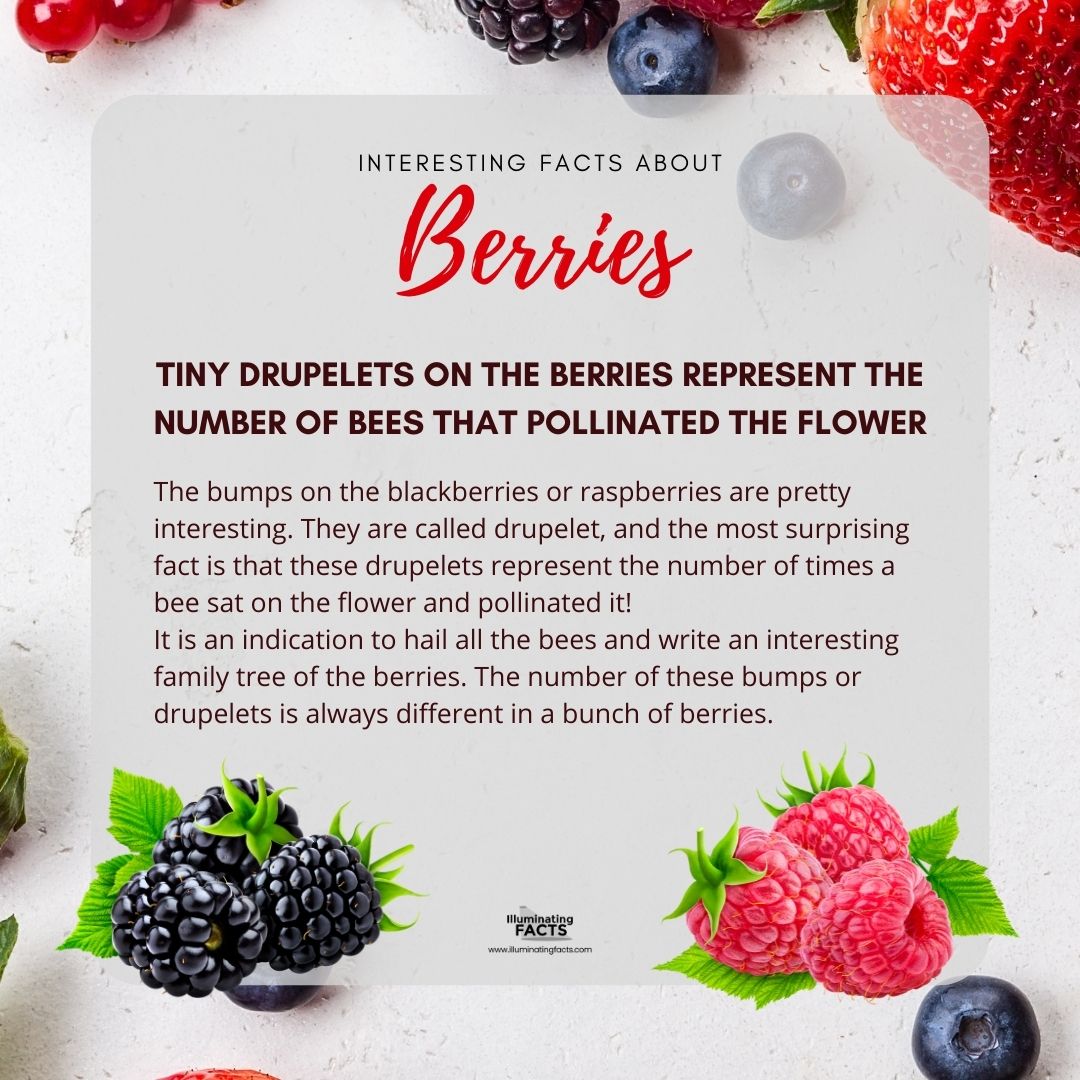
The bumps on the blackberries or raspberries are pretty interesting. They are called drupelet, and the most surprising fact is that these drupelets represent the number of times a bee sat on the flower and pollinated it!
It is an indication to hail all the bees and write an interesting family tree of the berries. The number of these bumps or drupelets is always different in a bunch of berries.
9. Tiny Hair on the Strawberries Help Protect Them from Damage
Have you noticed tiny hair on the berries? They are nothing dangerous or harmful; thus, you do not need to remove them before consuming berries. These tiny hair are called ‘styles’ that protect the fruit from damage. [5]
10. Bananas Are Also ‘Technically’ Berries
Bananas are also technically berries, and to understand this fact, you need to know the previously mentioned fact about the various classifications of the fruits depending on how they grow and develop. Like berries, bananas also grow from flowers of a single ovary. [6]
So, berries and bananas are aggregate fruits.
11. Blueberries Grow On a Bush That Takes Almost Ten Years to Mature
Blueberries are one of the slowest growing plants in the whole plant kingdom. A blueberry bush matures in about ten years, meaning it bears fruit after ten years. However, a blueberry bush lasts a very long time on the upside. So, it is worth waiting for. [7]
12. Blueberries Are As Old As 13,000 Years
The healthy boost of blueberries dates back to the early 1900s, when Native Americans recognized all the amazing health benefits of blueberries. It was the combined effort of Elizabeth White, who owned acres of family farms of cranberries, and Fredrick Coville, a USDA botanist. [8]
In 1912, the first-ever crop of blueberries began and was harvested in 1916.
13. Canada is the Top Exporter of Blueberries
Canada is one of the biggest exporters of blueberries worldwide. These berries are primarily grown in British Columbia. About 800 farmers harvest about 86,000 tons of blueberries every year, out of which about 70% are exported from Canada.
The US and Japan are among the leading importers of blueberries. Canada’s blueberry export is worth approximately $115 million, as per the 2021 export data. [9]
14. Anthocyanin is Responsible for the Natural Blue Color of the Blueberries
Blueberries are among the only few fruits that are not colored commercially. The striking blue colors of this amazing fruit are authentic and natural. Blueberries contain a pigment called anthocyanin, which is responsible for producing the beautiful blue color of the fruit. [10]
Anthocyanin is the same pigment that is quite beneficial to our health.
15. Strawberries Ripen in Early Spring
Strawberries are the first fruit that ripens during early spring. Strawberries indicate a fresh start for many people as spring is close by and the gloom is shedding. The sweet taste of strawberries reminds many people about their childhood and spring break.
However, technological advances in agriculture have made strawberries an all-year-round fruit. It can easily be commercially stored and refrigerated with intact freshness. Therefore, we are able to enjoy strawberries during every season.
16. Raspberries Come in Different Colors
Raspberries are not red only. Different varieties of this fruit come in different colors, such as yellow, pink, purple, and black. It all depends on the harvest time, temperature tolerance, and disease resistance. [11]
17. Strawberry Originated In Europe in the 18th Century
European farmers cultivated large varieties of strawberries called Fragaria in the 18th century. Mostly, there was no trade of strawberries during that time, so the countries developed their own types of strawberries in the 19th century.
The varieties of strawberries differ in countries due to differences in the climate, altitude, day length, and type of production.
18. Blackberries and Raspberries Date Back to the 17th Century
Unlike strawberries, blackberries and raspberries originated in Europe during the 17th century. The initially cultivated berries belonged to the genus Rubus, and their cultivation is older than that of strawberries or blueberries.
19. ‘Berry’ Actually Means Grape!
Not only do little bunches of berries clustered together look like grapes, but they also have a connection between their names. The word ‘berry’ is inspired by the Old English word ‘berie,’ which means grape. As English started becoming common among the Americans due to colonization, these grape-looking fruits were called berries, such as blueberry, elderberry, cranberry, etc. [12]
20. You Can Use Berries to Dye Clothes
The color pigment in all the berries makes berries more feasible for dying clothes. However, as anthocyanin, the color pigment, fades readily in sunlight, the dye from berries is not permanent. Even if you use it to dye clothes, the color will only be a stain as it will fade in the sunlight and eventually turn to a mellow brown. [13]
21. Strawberry Flowers Have Seven Petals
Most strawberry flowers have seven petals. However, it can also range anywhere from six to eight petals.
22. Americans Eat About a Lot of Berries
According to official statistics, Americans consume about 135.38 pounds of fresh fruit annually (as per 2015 data). A survey of five years reveals that the consumption of fresh berries in the United States peaked in 2015 at about 10.25 pounds per capita, compared to 10.03 pounds per capita in 2014. [14]
23. A Large Number of Strawberries Can Be Grown on a Small Land
The most exciting fact about growing strawberries is that you can easily grow about 50,000 pounds of strawberries across only one-acre land. The US and Canada have hundreds of fields of strawberries across the country.
24. California Produces Most Strawberries in the World
California alone produces up to 1 billion pounds of strawberries annually. One acre of land in California produces about 21 tons of strawberries every year. [15]
25. A Temperature between 55 to 78 Degrees is Ideal for Strawberries to Grow
The perfect temperature to grow strawberries is between 55 to 78 degrees. Botanists and agricultural experts assert that exposing strawberry plants to temperatures below 78 degrees is dangerous for the plants. [16]
Conclusion
Berries come from many different plants. Strawberries and raspberries come from certain kinds of roses, cranberries grow on vines, and blueberries and blackberries are types of fruits that grow on the bush. Berries come in many different colors; the most common are red, purple, or black. A few berries are orange or yellow. Though most berries look round, they can also be oval, oblong, and even egg-shaped.
Because of their great taste and many healthful qualities, fresh berries are available year-round at most grocery stores.
References
- Eating berries may activate the brain’s natural housekeeper for healthy aging. (2022, October 17). ScienceDaily. https://www.sciencedaily.com/releases/2010/08/100823142927.htm
- Nutrition intervention for migraine: A randomized crossover trial. (2014, October 23). BioMed Central. https://thejournalofheadacheandpain.biomedcentral.com/articles/10.1186/1129-2377-15-69
- Frozen berries nutrition facts and health benefits. (2020, August 27). Verywell Fit. https://www.verywellfit.com/frozen-berries-nutrition-facts-and-health-benefits-5075040
- Diagnosing dry calyx problems on strawberry fruit. (n.d.). ANR Blogs. https://ucanr.edu/blogs/blogcore/postdetail.cfm?postnum=16991
- 10 fun facts about berries. (2019, March 12). Minnesota Monthly. https://www.minnesotamonthly.com/sponsored/10-fun-facts-about-berries
- Bananas are berries. Raspberries are not. (n.d.). Office for Science and Society. https://www.mcgill.ca/oss/article/did-you-know/bananas-are-berries-raspberries-are-not
- Growing blueberries in the home garden. (n.d.). Extension at the University of Minnesota. https://extension.umn.edu/fruit/growing-blueberries-home-garden
- History of Blueberries. (n.d.). https://blueberry.org/about-blueberries/history-of-blueberries/. https://blueberry.org/about-blueberries/history-of-blueberries/
- Conner, M. (2021, December 13). Is Canada the largest exporter of blueberries?Canada Online Guide. https://cubetoronto.com/canada/is-canada-the-largest-exporter-of-blueberries/
- Did you know? 10 surprising facts about blueberries. (n.d.). BC Blueberries | BC Blueberry Council. https://www.bcblueberry.com/bc-blueberry-council/news/did-you-know-10-surprising-facts-about-blueberries
- david.madore. (2021, March 12). What colors do raspberries come in? (5 cool raspberry colors). GreenUpSide. https://greenupside.com/what-colors-do-raspberries-come-in-5-cool-raspberry-colors/
- Why do we call them berries?(2020, May 15). Dictionary.com. https://www.dictionary.com/e/berries
- Dyeing with berries. (2019, June 28). Rebecca Desnos. https://rebeccadesnos.com/blogs/journal/dyeing-with-berries
- S. fresh berries consumption per capita, 2015. (2017, July 26). Statista. https://www.statista.com/statistics/257200/per-capita-consumption-of-fresh-berries-in-the-us/
- Moyer, K. (n.d.). 25 strawberry fun facts. AgHires Blog. https://blog.aghires.com/25-strawberry-fun-facts
- (2022, May 27). Strawberry facts. Facts.net. https://facts.net/strawberry-facts
- Can strawberries whiten your teeth?(2016, July 7). Tampa Smiles. https://www.southtampasmiles.com/can-strawberries-whiten-your-teeth
- Aggregate fruits. (n.d.). JBS Computer Science. https://science.jburroughs.org/resources/flower/fruit4.html

